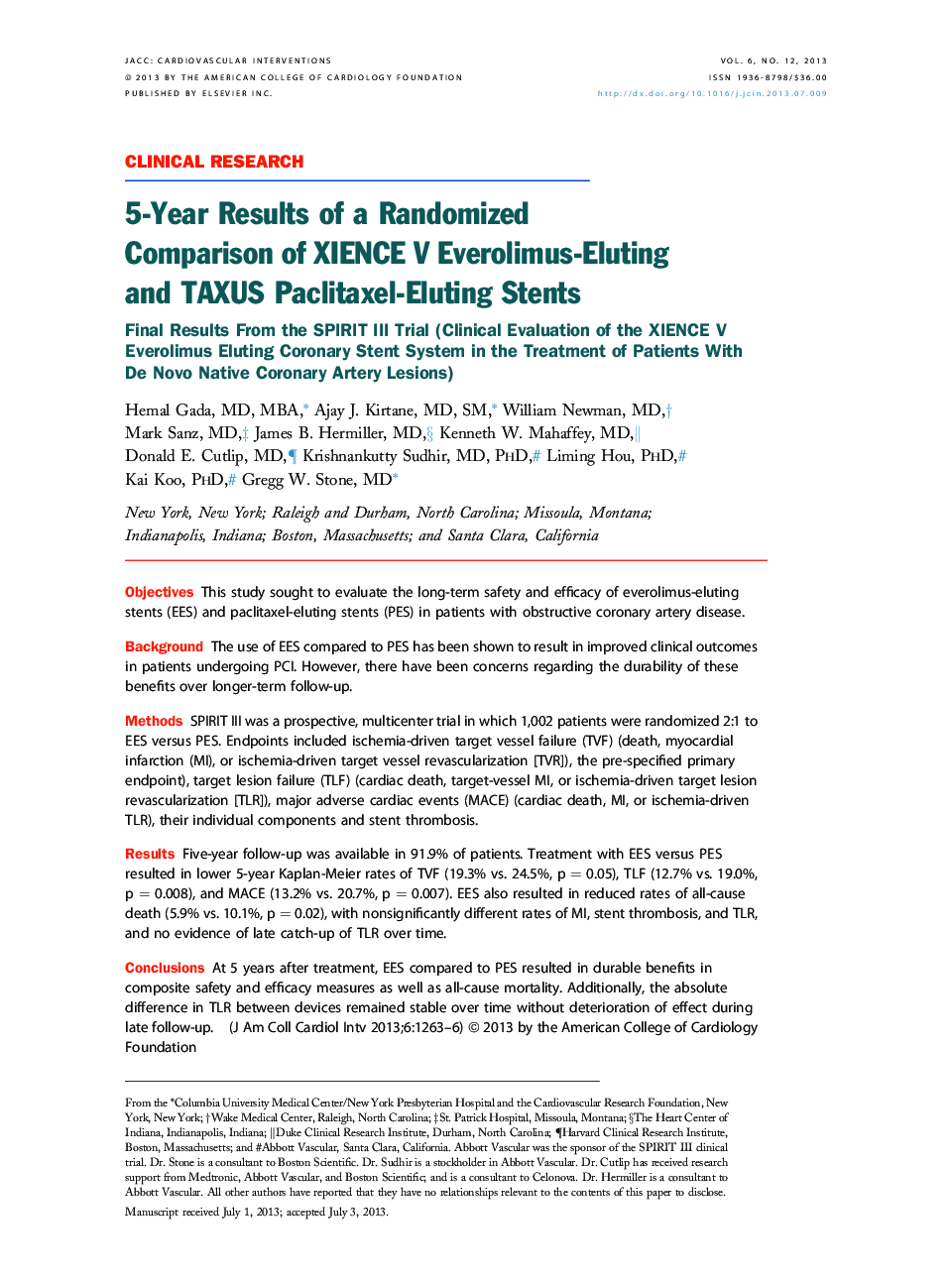| کد مقاله | کد نشریه | سال انتشار | مقاله انگلیسی | نسخه تمام متن |
|---|---|---|---|---|
| 2940405 | 1177030 | 2013 | 4 صفحه PDF | دانلود رایگان |

ObjectivesThis study sought to evaluate the long-term safety and efficacy of everolimus-eluting stents (EES) and paclitaxel-eluting stents (PES) in patients with obstructive coronary artery disease.BackgroundThe use of EES compared to PES has been shown to result in improved clinical outcomes in patients undergoing PCI. However, there have been concerns regarding the durability of these benefits over longer-term follow-up.MethodsSPIRIT III was a prospective, multicenter trial in which 1,002 patients were randomized 2:1 to EES versus PES. Endpoints included ischemia-driven target vessel failure (TVF) (death, myocardial infarction (MI), or ischemia-driven target vessel revascularization [TVR]), the pre-specified primary endpoint), target lesion failure (TLF) (cardiac death, target-vessel MI, or ischemia-driven target lesion revascularization [TLR]), major adverse cardiac events (MACE) (cardiac death, MI, or ischemia-driven TLR), their individual components and stent thrombosis.ResultsFive-year follow-up was available in 91.9% of patients. Treatment with EES versus PES resulted in lower 5-year Kaplan-Meier rates of TVF (19.3% vs. 24.5%, p = 0.05), TLF (12.7% vs. 19.0%, p = 0.008), and MACE (13.2% vs. 20.7%, p = 0.007). EES also resulted in reduced rates of all-cause death (5.9% vs. 10.1%, p = 0.02), with nonsignificantly different rates of MI, stent thrombosis, and TLR, and no evidence of late catch-up of TLR over time.ConclusionsAt 5 years after treatment, EES compared to PES resulted in durable benefits in composite safety and efficacy measures as well as all-cause mortality. Additionally, the absolute difference in TLR between devices remained stable over time without deterioration of effect during late follow-up.
Journal: JACC: Cardiovascular Interventions - Volume 6, Issue 12, December 2013, Pages 1263–1266